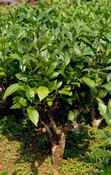
A lot of confusion prevailed regarding the correct name of the tea plant until the International Botanical Congress in 1935 decided Camellia sinensis (L) to be the correct name of tea plant. While the nomenclature of the tea plant was finally settled, the position of the two texa represented by the China and the Assam plants remained open. Dr. W. Wight in 1962 proposed the specific rank Camellia sinensis (L) for the China tea plant, Camellia assamica (Masters) for the Assam tea plant and the sub-specific rank Camellia assamica sub sp. lasiocalyx (Planch. MS) for the Southern form (Indochina) of tea plant.
Morphological characters of the three races of tea plants were studied in detail at Tocklai. Dr. W. Wight in 1962 gave a concise description of the China and the Assam races while proposing their specific ranks. A year later, Mr. P.K. Barua provided the morphological and anatomical description of the three races of tea, which were later, elaborated by Dr. H. P. Bezbaruah in 1971. A summary of the morphological characters of the three races of tea, using Wight’s nomenclature, is given below:
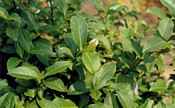
Camellia sinensis L. or the China tea plant is a big shrub, 1-2 m tall with many virgate stems arising from the base of the plant near the ground. Leaf hard, thick and leathery; surface matt, marginal veins indistinct and appear sunken in lamina. Blade elliptic with obtuse or broadly obtuse apex; base cuneate, margin bluntly serrulate to sinuate-serrulate with more or less incurved teeth, glabrous above and villose below when young, becoming sparsely villose as the leaf ages. Ultimately becoming glabrous. Young leaves garnet-brown through ox-blood to purple in colour. Petiole short, 3-7 mm long, stout, usually giving the leaf an erect pose.
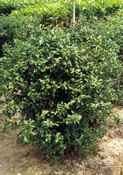
Flowers are borne singly or in pairs in the cataphyllary axils. Pedicel 6-10 mm long, clavate, glabrous with 2-3 sub-opposite scars little below the middle, marking the position of caduceus bracteoles 2-5 mm long. Sepals 5-6 , imbricate, persistent, leathery, ovate or orbicular, 3-6 mm long, glabrous, green petals 7-8, shallowly cup-shaped, 1.5-2 cm long, broad-oval to sub-orbicular, generally white sometimes with pale pink pigmentation. Stamen numerous, arranged in two whorls, inner ones shorter and fewer in number, outer longer and more numerous, 8-13 mm long, united at the base for a few mm with the corolla lobes. Ovary white, densely hairy, 3 locular, ovules 3-5 in each loculus, placentation axial. Style generally 3, sometimes up to 55, free for the greater part of their length, occasionally free up to the base of the ovary. Stigma apical. Capsule 1,2, or 3, coccate, containing 1 to 3 nearly spherical seeds, 10-15 mm in diameter. On the basis of leaf sizes Sealy (1958) recognized two forms of C. sinensis (a) F. macrophylla (Sieb.) Kitamura, with leaves 4-14 cm long, 2-2.5 cm wide and (b) F. parvifolia (Miq.) Sealy, with leaves 5-1.6 cm long and 1-1.2 cm wide.
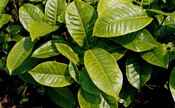
Camellia assamica (Masters) or the Assam tea plant is a small tree. 10-15 m tall with a trunk sometimes up to one third of its height, possesses a robust branch system. In typical plants, leaf dependent, thin, and glossy with more or less acuminate apex and distinct marginal veins. Leaf blade usually broadly elliptic, 8-20 cm long and 3.5-7.5 cm wide, base cuneate, margin obscurely denticulate to bluntly wide-serrulate, glabrous or persistently hairy on the midrib below. Flowers single or in pair on the cataphyllary axils, pedicels with scars of 3 caduceus bracteoles, smooth and green. Sepals 5-6 unequal, leathery, persistent. Petals 7-8, white, occasionally with pale yellow pigmentation at the base of petals. Stamen numerous as in C. sinensis
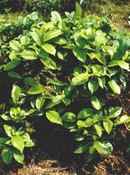
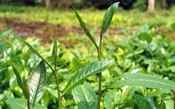
Camellia assamica sub sp. lasiocalys (Planch.MS) or the Cambodiensis or Southern form of tea is a small fastigiated tree. 6-10 m tall, with several upright, almost equally developed branches. Leaf more or less erect, glossy, and yellowish-green when young, light-green at maturity changing to coppery-yellow or pinkish-red from autumn till the end of the season. Petiole pinkish-red at the base. Leaf size intermediate between sinensis and assamica, broadly elliptic, marginal veins not very prominent. Ovary 3-4, sometimes 5-1ocular, style 3-5, free nearly up to half the length, ad pressed, straight with apical or linear stigma. On the other floral characters, it resembles the Assam plant, with the difference that 4 or more bracteoles are found on the pedicel of flowers.
